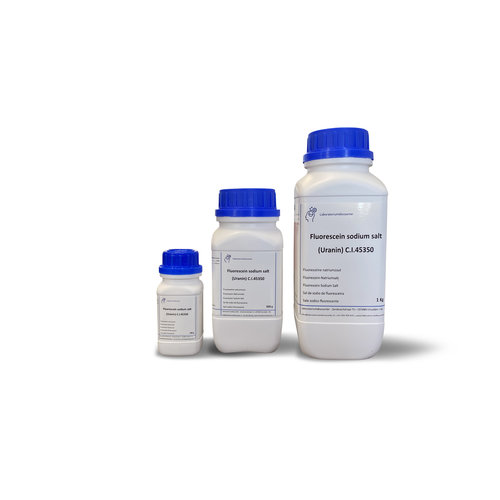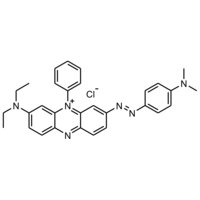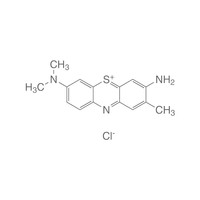You have no items in your shopping cart
Fluorescein Sodium Salt (C.I. 45350) Extra Pure
- Buy 2 and save 5%
- Buy 6 and save 10%
The water-soluble sodium salt of fluorescein is called uranine (same CI number 45350, molecular formula C20H10Na2O5) and is a commonly used yellow dye that fluoresces green under UV and daylight.
In aqueous solution, uranine has an enormous coloring capacity (a uranine concentration of only 0.1 mg/l against a white background leads to visible discolouration).
In the event of shipwreck, an amount of as little as 500 g of uranine will conspicuously stain an area of the sea of approximately 4000 m², facilitating discovery by seekers, especially from the air.
The dye is still used in many ways, especially for coloring bubble baths, bath additives, shampoos, cosmetics and antifreeze for car radiators, to easily locate leaks in the cooling system with a UV lamp. If the seal between the cooling system and the combustion chamber is leaking, the dye can even be detected on the exhaust. It is also used for leak testing on flat roofs and tank systems. Uranine is considered biologically harmless. Therefore, it is used by hydrologists and hydrogeologists as a so-called tracer to follow groundwater flows and underground river courses. In 1877, 10 kg of uranine was introduced into the Danube near Immendingen and 60 hours later a clear fluorescence was noted in the river Aach, which helped to elucidate the sinking of the Danube.
Uranine is also used for decoration, for example for fluorescent paint in discotheques or sets (in science fiction or horror films: uranine illuminated with UV light looks "toxic-radioactive"). Initially, annually on March 17, Saint Patrick's Day, the Chicago River that flows through Chicago was painted green with uranine. However, through the intervention of EPA, a vegetable dye has been used since 1966. Uranine was used by environmentalists on September 10, 2019 to make the river Limmat green in Zurich; This led to a police investigation into water pollution.
Molar mass (M) 376,28 g/mol
Flash point (flp) 217,6 °C
Melting point (mp) 317 °C
WGK 1
CAS No. [518-47-8]
EG-Nr. 208-253-0
Downloads










